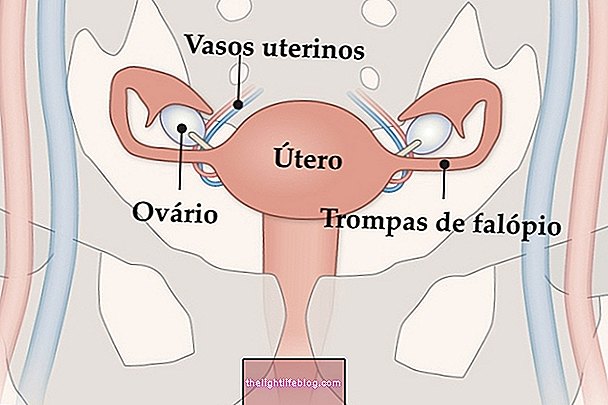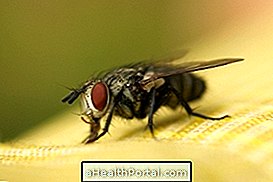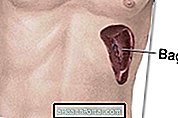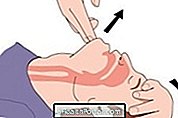Mites are small animals, belonging to the class of arachnids, which can be found frequently at home, mainly on mattresses, pillows and cushions, being considered one of the main responsible for respiratory allergies. There are several species of mites and the largest ones are about 0.75 mm, so their visualization is only possible through the microscope.
To avoid dust mites it is important to keep the environment always clean, free of dust, change sheets periodically and regularly expose pillows, cushions and mattresses to the sun.

Diseases caused by mites
As they are very small and can be easily spread through the air, dust mites are often related to respiratory allergies, and there may be some sign on the skin of hypersensitivity to the mite. Thus, the main situations that mites may be related to are:
- Asthma, in which there is a change in the airways, so that the air is able to circulate correctly and the person starts to have short and difficult breathing;
- Allergic rhinitis, in which there is inflammation of the mucosa that lines the nose due to the presence of mites, which leads to the appearance of symptoms such as runny nose, itchy nose and frequent sneezing;
- Atopic dermatitis, which is characterized by the appearance of red spots on the skin, which can be one of the symptoms of dust mite allergy.
Mites can be present in different environments, since there are several species with specific needs and characteristics. Household mites are found most often in humid environments and mainly on pillows, bedding, mattresses and pillows. This is because they feed on cellular debris, often derived from the loose scales of the skin, which can be found easily in mattresses, for example, making this environment favorable for the presence and reproduction of mites.
In addition to the mite itself, its excrement and body fragments are also responsible for allergic reactions, since they can be suspended in the air and spread throughout the house, being considered one of the constituents of domestic dust.
How to eliminate dust mites
The most effective way to prevent and eliminate mites is through measures that help prevent the proliferation of these animals. Therefore, it is important to leave the house well ventilated and ventilated, avoiding humidity, change the sheets periodically, vacuum the mattresses and pillows regularly and use a protective cover on the cushions and pillows.
In addition, it is important to pay attention to the air conditioning filter and the dust accumulated in the fan, it is recommended to regularly change the filters and perform hygiene, in addition to controlling the humidity of the air and leaving pillows, cushions and mattresses exposed to the sun, that the heat decreases the humidity and creates an environment that is not favorable to the development of the mites, despite not being effective in their elimination.
Thrombiculid mites - Chigger mites
Thrombiculids are mites that can vary in color according to the type of food in their youngest or adult evolutionary form, and can be yellow, red, white or orange. This type of mite has different names according to the region in which it is identified, being known as chigger mites in the United States and red bugs in England, for example.
The larva of this mite is classified as vertebrate ectoparasite, that is, they are found outside the host's body, which in this case are people. When carrying out parasitism, the thrombiculid mite larva can cause skin lesions due to the presence of enzymes in its saliva. These enzymes make small holes in the skin in order to form a channel that allows the mites to feed, which results in the appearance of some symptoms, such as itching, local redness and blisters that can grow over time.
In addition, this type of mite is considered as a potential vector of Rickettsia, which is a bacterium responsible for some serious diseases, such as spotted fever, which is mainly related to the star tick, and typhus. Learn more about Rickettsia.
Was this information helpful?
Yes No
Your opinion is important! Write here how we can improve our text:
Any questions? Click here to be answered.
Email in which you want to receive a reply:
Check the confirmation email we sent you.
Your name:
Reason for visit:
--- Choose your reason --- DiseaseLive betterHelp another personGain knowledge
Are you a health professional?
NoMedicalPharmaceuticalsNurseNutritionistBiomedicalPhysiotherapistBeauticianOther
Bibliography
- JACINAVICIUS, Fernando C. Thrombiculid mites (Thrombidiformes: Trombiculidae) from small mammals in the states of São Paulo and Paraná: morphological studies and investigation of the presence of Rickettsia. Master's Thesis, 2015. University of São Paulo.
- SCIENCE DIRECT. Thrombiculidae. Available in: . Accessed on 17 Sep 2019
- MEDICAL NEWS TODAY. How to treat and prevent chigger bites. Available in: . Accessed on 17 Sep 2019






















